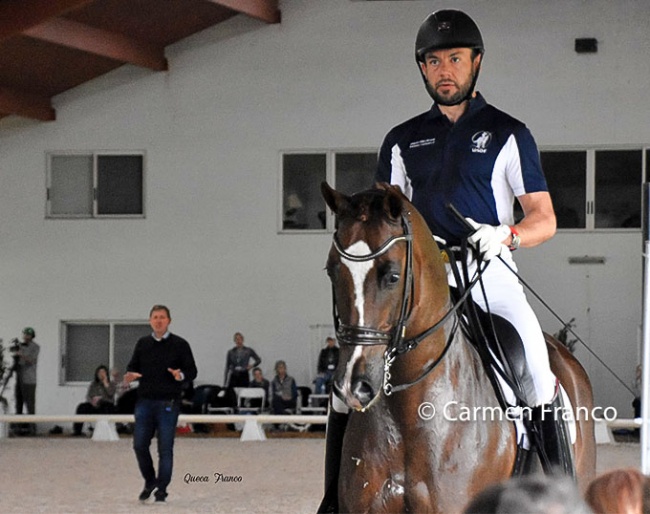
- Text and Photos © Carmen Franco for Eurodressage
This is the continuation of my report about the USDF FEI level Trainers Conference, a fantastic program of the United States Dressage Federation, hosted every year at the beautiful High Meadows Farm owned by Walter and Mary Anne McPhail.
This year the clinicians were Olympians Sven Rothenberger and Sabine Schut-Kery, with retired FEI Judge Lilo Fore as moderator. You can find part 1 of the report here.
Systematic Work
Next up after a lunch break to work with Sven Rothenberger was Kristin Stein on the 8-year old Dutch warmblood Karamba (by Apache x Florencio x Jazz). This is a very sensitive, hot horse that got tense with the environment. His reaction is mainly to go behind the bit. Sven said the correction will come from building a strong back and core. Kristin rode very tactfully with soft aids, switching between rising and sitting trot. The approach to transitions was to apply the leg - long and without the use of the spur - and “take the bit in front, from the seat” to avoid his neck and chest getting too tight. When extending the trot, she was encouraged to start in rising trot and then sit, to teach him to stretch more into connection.
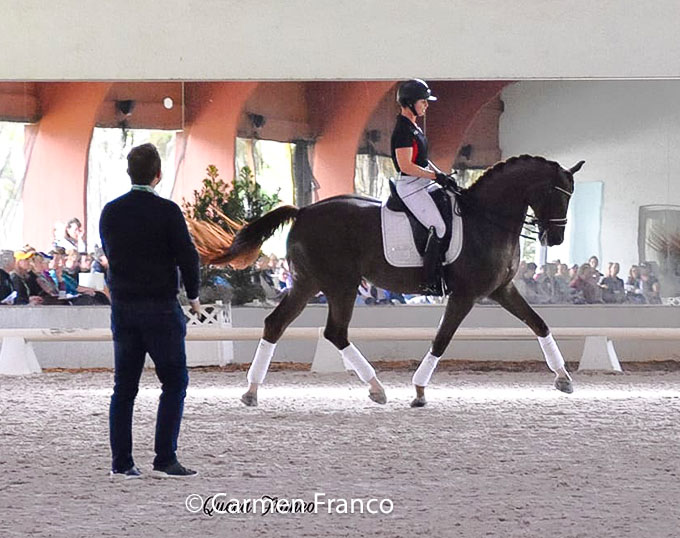
Sadly, Kristin couldn’t bring back Karamba for the second day and Jessica Jo Tate jumped into that spot with the 10-year old Hanoverian Denali (by Don Noblesse x Scolari). During the warm-up, Sven noticed how it was easier to bend on one side than the other and he made them work on 20-meter circles with the haunches to the inside, as Denali wanted to throw them out. “It’s easier to bend than stretch a muscle, do it gradually. If you made me do the splits today, I would be so scared, but if every day we worked on it for the next ten years, I could do it.”
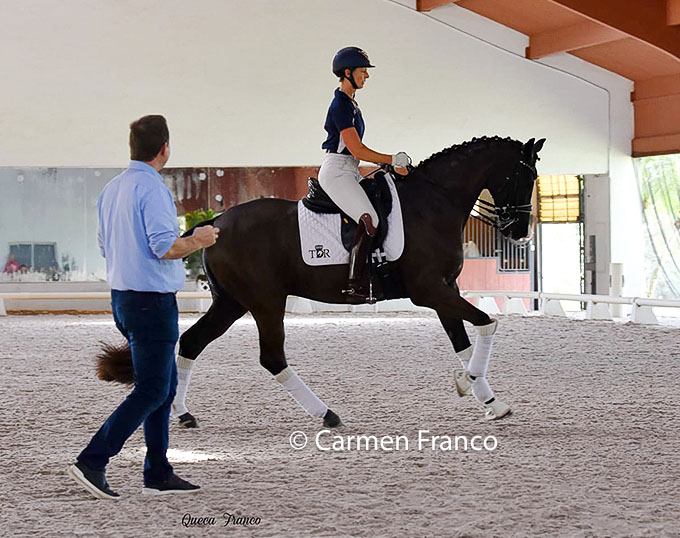
Be Assertive
Sabine Schut-Kery was very pleased when she saw Tanya Rennie on the 13-year-old KWPN gelding Faldo (by Tango) with a snaffle. She said she loves the direct connection with just one bit in the mouth.
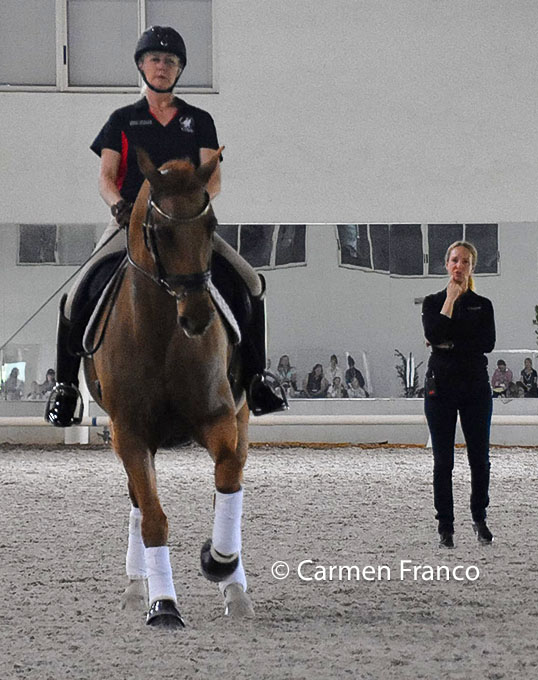
At some point, Tanya was asked to take the reins in one hand and swing down into the horse, this would help checking how much is the horse depending on the aids. To prepare for pirouettes, Sabine requested to collect the canter first on the rail, then over the center line. When collected they did 8m volte maintaining every stride the same, then 90 degree turns. “Remember to give to keep everything elastic, but don’t give forever, just one stride. Just try it, all that can happen is that it goes wrong. Then you can learn and correct.”
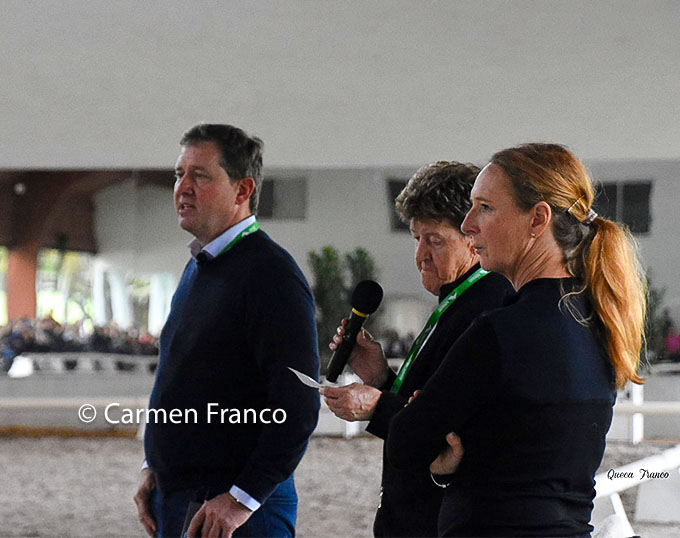
Relaxation is the Key
Every horse reacted differently to the environment, and you could see what a shy horse Endel Ots was on when they walked into the arena. His own and Caroline Hoerdum's 8-year old Belgian warmblood gelding Lion King (by Grand Galaxy Win x Quaterback - horse was originally named Qadansky van het Bloemenhof) was very anxious about performing around this type of public to what Sven suggested to stay on the basics, just asking normal gaits without any artificial steps when starting to develop the engagement. He insisted on waiting putting pressure on, as the horse was still tense. They spent some time working low, deep and round to what Sven reminded Endel to stay upright and not go with the same LDR position as the horse. Then went into basic transitions between gaits focusing on making them clean. When King wanted to spook, Endel was quick to correct to what Sven said: “be gentle about it, you can’t avoid every mistake, the horse needs to trust you in the correction.” They were very careful to school too many movements because it took time for King to relax. “If you don’t have relaxation, the horse will learn everything in tension.”
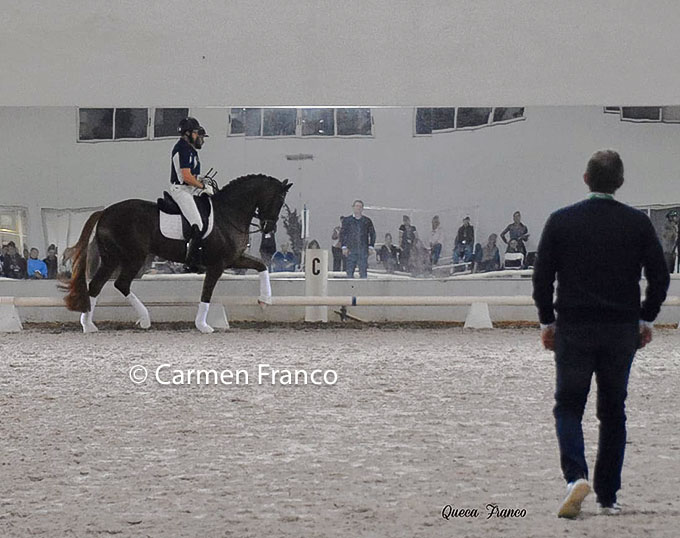
During one of the breaks the question on when to start with piaffe was made. Sven said he starts when the horses are no younger than 5 years old, touching from the ground, not really looking for piaffe but just for reaction. Sabine said she doesn’t get excited about teaching piaffe, she prefers to teach a better trot and good transitions. If the horse does good transitions, it will be easier to get to the piaffe. And advises to be careful if the horse has talent for it: “don’t drill! Be sure you do it correctly from the beginning, so you don’t start with bad habits.”
Paint the Picture
Last but not least was Jessica Jo Tate on Ilene Boorman's 12-year old Oldenburg Romeo (by Rousseau x Opus) under Sven’s guidance.
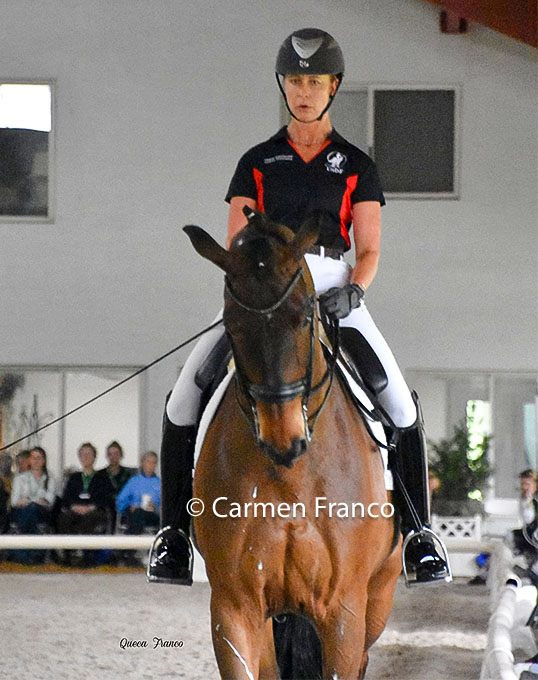
For schooling half steps JJ was told to tap with the whip rhythmically to make Romeo active. “It’s better to do five steps with good piaffe and repeat, than keep going on not so good steps. You have to imagine how it will look, paint the picture in your head.” Romeo had some beautiful moments and Jessica was told to match him by maintaining her position.
During the second day, Romeo looked more relaxed. They insisted on improving the canter quality by spiraling in a 20-meter circle and also putting the hindlegs inside and outside in a smaller circle. At some point, Sven joked: “riding is very easy… it really is when you have a good horse and good training.” After a break, they went on into half-passes at the canter and Sven remarked: “I was waiting to criticize you but wow!” It was so well executed! Nevertheless, Sven suggested that also there, she could play with the tempo. And made it even more challenging by asking her to do the half-pass at the walk and turn it into canter.
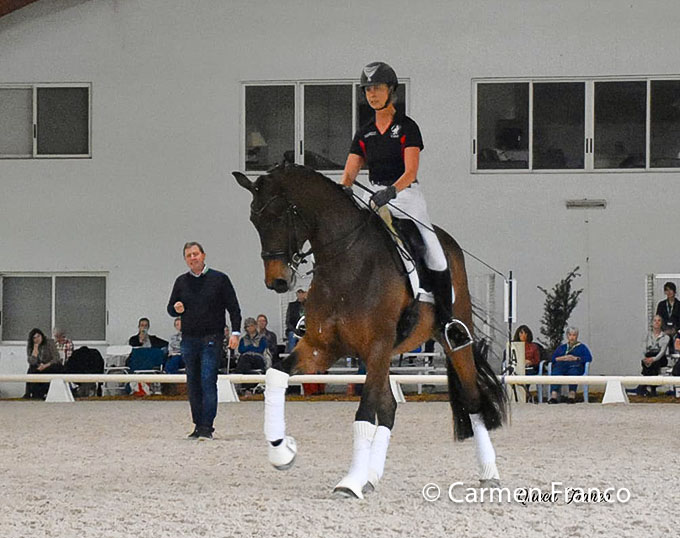
Without a doubt, the big summary of these great couple of days, is that only through good basics, detailed position of the rider with well-timed aids, we can make a positive influence and have success in teaching and performing movements with the horses we are lucky to ride. Thanks again to riders, horses, and their teams behind; and to the organizers, sponsors, and host for another excellent training opportunity!
- Text and Photos © Carmen Franco for Eurodressage
Part I: 2024 USDF Trainers Conference: "Forward is a Lifestyle"
Related Links
Nuggets of Wisdom from the 2023 USDF FEI Level Trainers' Conference
Carl Hester's Wisdom: "Dedicate Yourself to Get Better, Nobody is Perfect"
McDonald, Traurig, Williams, Bredahl to Speak at 2019 USDF FEI-Level Trainers Conference
2018 USDF FEI-Level Trainers Conference with Johann Hinnemann in Del Mar, California
Demo Riders for 2018 USDF FEI-Level Trainers Conference
Hinnemann and Clarke to Head 2016 USDF Trainers Conference
Stephen Clarke to lead 2015 USDF FEI-Level Trainers Conference
Steffen Peters and Scott Hassler Headlining USDF FEI-Level Trainers' Conference